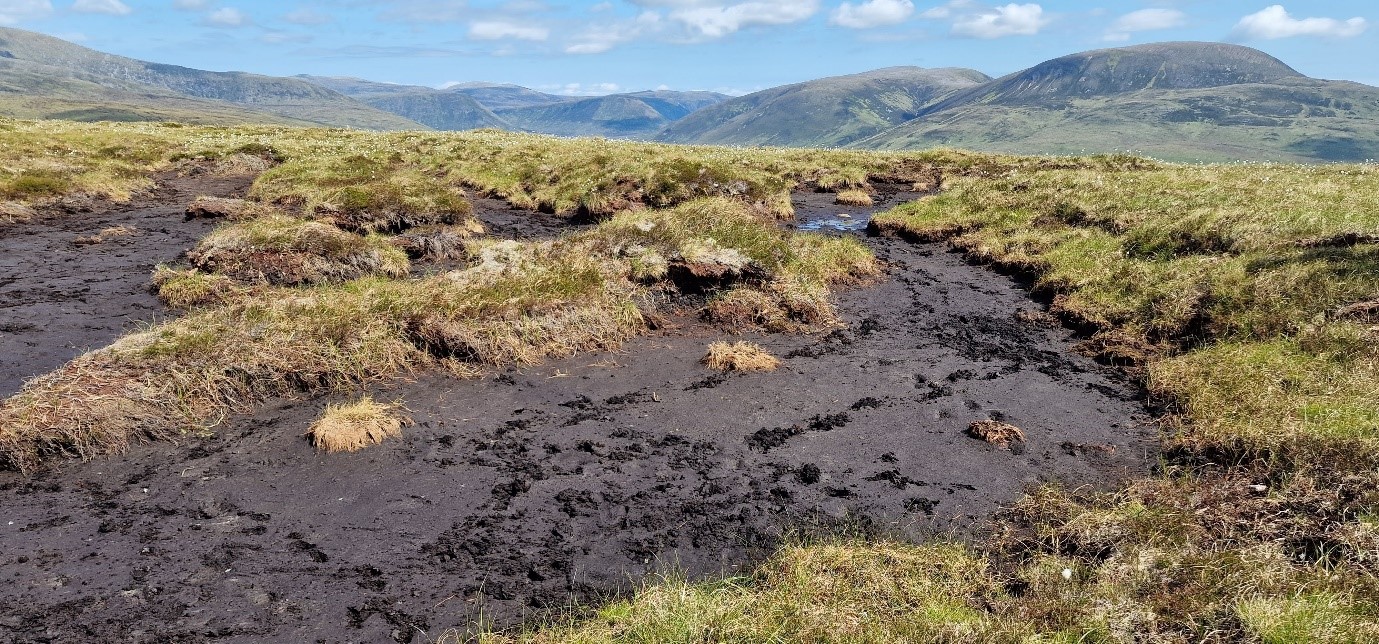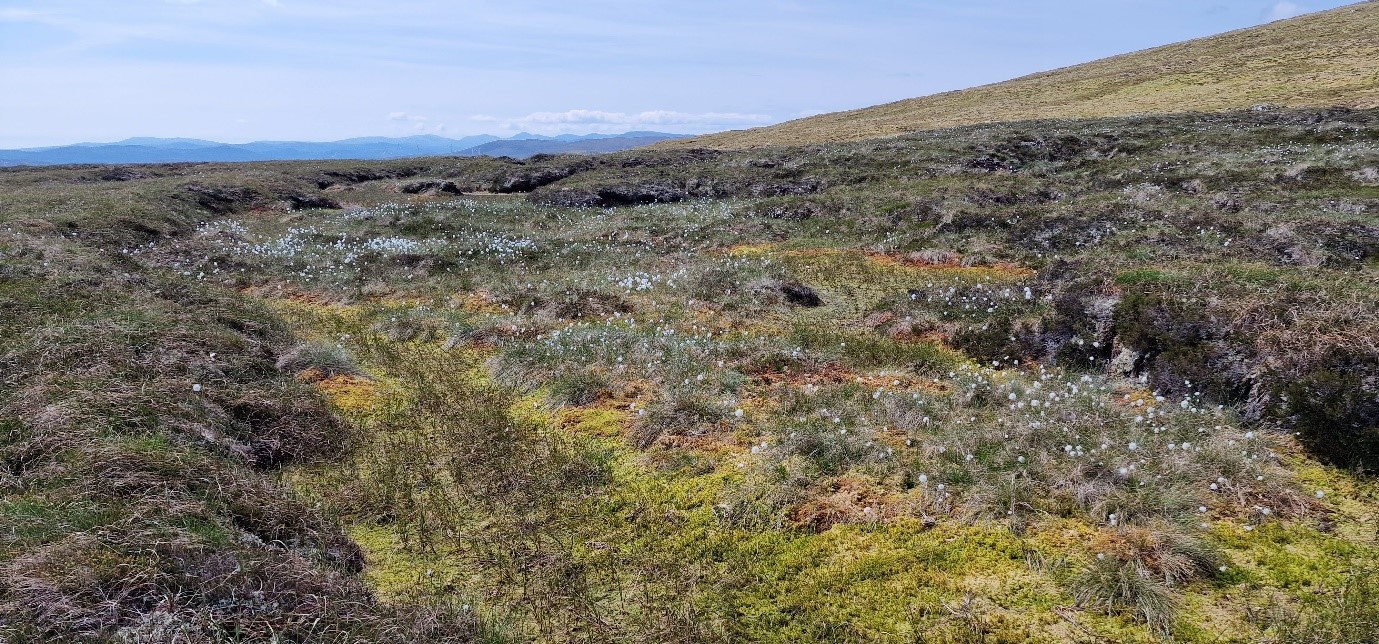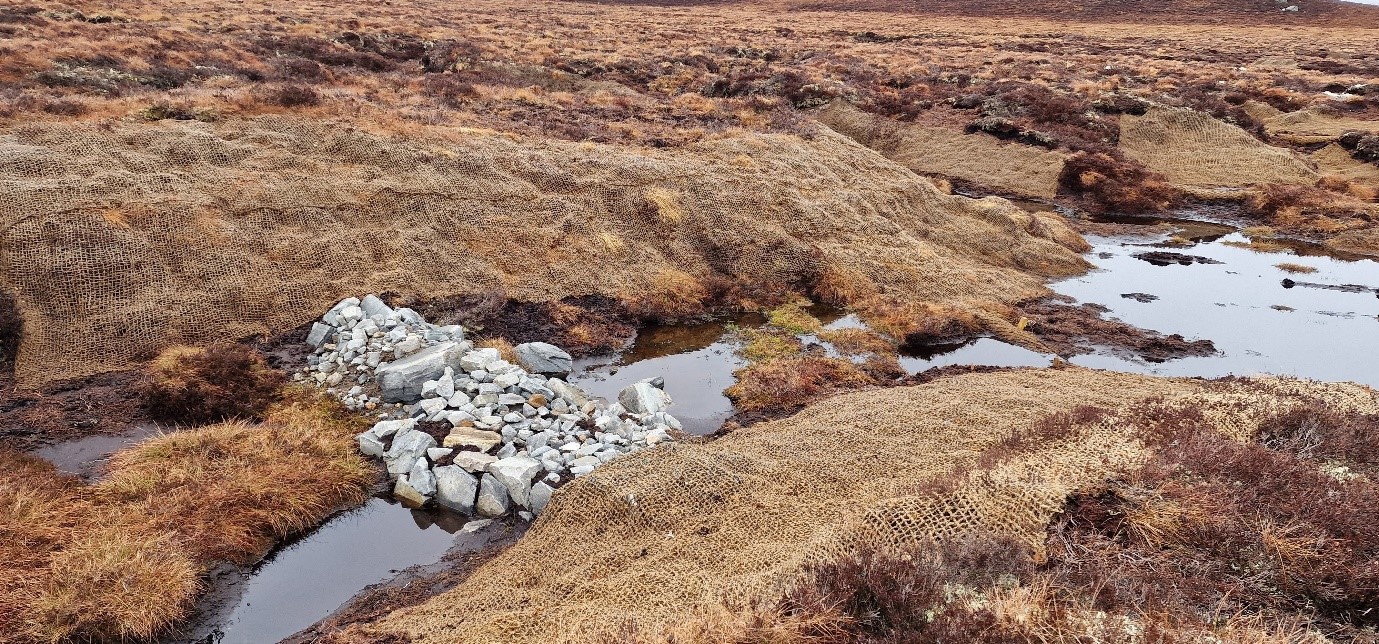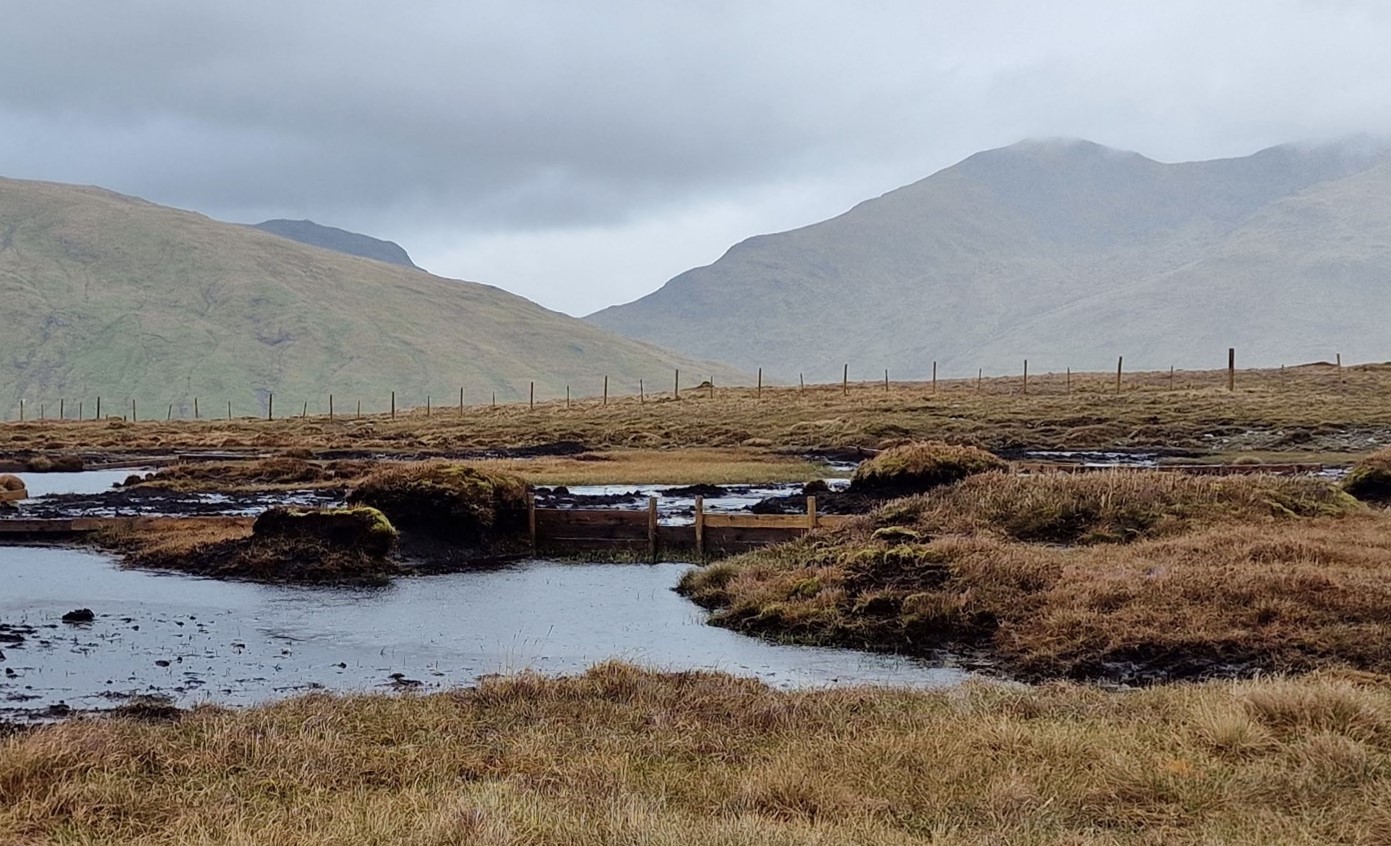Peatland Restoration Practicalities
6 November 2023Introduction
Over 80% of Peatland in the UK is degraded and as a result the UK and Scottish Governments have set out ambitious plans to restore peatlands for climate and wider environmental benefits. Peatland restoration provides a great opportunity to achieve GHG emissions reductions, carbon sequestration, biodiversity, and water quality improvements without negatively impacting agricultural production. UK peatlands account for around 10% of the total land area; here in Scotland that rises to about 20%. Scottish peatlands are storing 1.7 billon tonnes of carbon which is equivalent to around 140 years of Scotland's total annual greenhouse gas emissions. To protect this valuable carbon store, Scottish government has set out ambitious restoration targets, aiming to restore 250,000 hectares of degraded peatlands by 2030. To learn more read The Benefits of Peatland Restoration.

How to Restore Peatland
There are multiple different approaches taken to restore peatland and much of the approach depends on the type and scale of degradation that has occurred. In general, the level of degradation can be categorised as modified, drained and actively eroding; all a result of human activity. Most degraded peatlands will have been dried out in some way and so rewetting that peatland is crucial for restoration. As a consequence of a peatland being dried out, bare peat, haggs and gullies can form by erosion but also further amplify the erosion processes in the peatland. However, simply rewetting these areas may not be enough in some cases to restore them and therefore revegetation is often required. In some cases a form of grazing management is also used to manage peatland degradation.

How do I know if my Peatland is Degraded?
A clear indication of peatland degradation can be the type of vegetation on the surface. In many cases, if a peatland is dominated by heather (especially common heather Calluna vulgaris) this indicates that it has been drained or has dried out and would potentially benefit from restoration activities such as drain blocking. Another, more obvious sign of degradation is the presence of erosion features such as bare peat, haggs and gullies, this indicates actively eroding peat and restoration intervention is crucial. In many cases a degraded peatland may look to the land manager as it should or as it has always been, this is due to the historic nature of peatland drainage impacting on how we perceive peatlands.
First Steps
The first thing a land manager should do if they recognise that they have degraded peatland and would like to restore it is to contact Peatland Action. The local Peatland Action Officers are able to provide support and guidance throughout the peatland restoration project form inception to ongoing management. If it is decided that there is potential to restore the peatland a feasibility study will be commissioned to confirm peat depth, peat condition, type and extent of erosion, indicating the scale of degradation and guiding a plan for restoration and management. Once the feasibility study has been completed, project design plan developed and the restoration is good to go ahead, funding of the project can be sought using public, private or blended. See Financing Peatland Restoration for more information.
Methods of Restoration
The restoration activities can now commence being completed by experienced competent contractors with peatland restoration experience.
Rewetting (or 'Stopping from Draining')
The most common approaches to rewetting a peatland are through the installation of dams and bunds in ditches and gullies with the intention of slowing down water flow and raising the water table to rewet the surface peat. Peatlands were actively drained for agriculture in the past, so blocking drains and ditches can help raise the water table upstream. It is crucial that a feasibility study is carried out by a trained professional to identify the best areas and methods to block drains for maximum impact.
Revegetating
Although a rewetted peatland may naturally revegetate over time, in some cases the revegetation process can be given a helping hand through stabilisation of the eroded areas. Reprofiling steep hags and gullies makes their banks more suitable to natural re-vegetation. Large, eroded areas may require the use of mulch, brash or even geotextiles to stabilise further the eroded banks and/or provide a seedbank to start the vegetation growth. The use of mulch or brash is usually dependent on the availability of the local heather resource on site. In some cases, direct revegetation using purchased plant plugs (such as sedum plugs) can be used in areas with limited access to sedum resource.


Grazing Management
Grazing can also have an effect on the quality of the peatland and so managing grazing can, in its own right, support natural restoration while also protecting restored areas from further degradation prior to rewetting and revegetating taking place.
Described above are the most commonly used methods, however, other methods of restoration exist and their selection will depend on a range of factors such as the site conditions, site specifications (including scale of degradation, location, access, slope), complexity of the degradation and resources available. Bespoke methods are used for forest-to-bog restoration; and raised bogs often benefit from cell bunding. More information on different restoration techniques can be found in the Peatland Action Technical Compendium in sections 4 to 10.
Sarah Erbanova, SAC Consulting
Sign up to the FAS newsletter
Receive updates on news, events and publications from Scotland’s Farm Advisory Service

